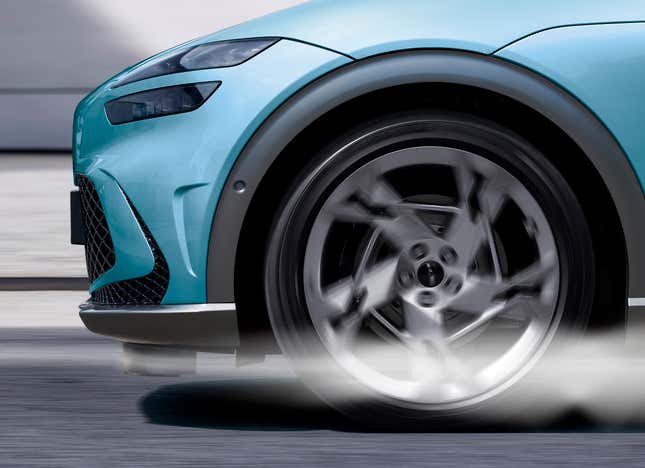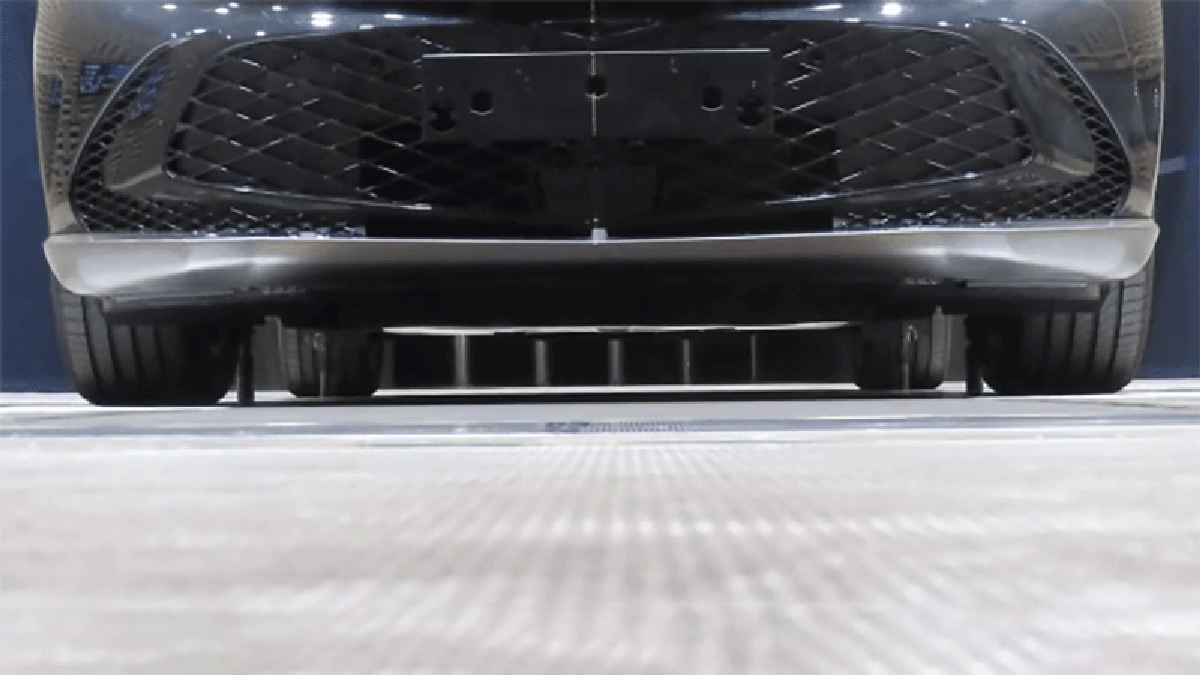Aerodynamics has always played a huge role in car design, but it’s especially important for electric vehicles, where every bit of extra range that can be eked out makes a difference. Hyundai Motor Group has released the first details on its new Active Air Skirt tech that’s in development, which will improve the range and high-speed stability of the company’s upcoming EVs.
Demonstrated in prototype form on a Genesis GV60, the Active Air Skirt (AAS) consists of two flaps under the nose of the car, positioned just ahead of the front wheels to direct air flow around the tires. These deploy at 50 mph and retract again at 43 mph; Hyundai says the staggered speeds are “to prevent frequent operation in specific speed ranges.” They’ll work at up to 124 mph, and the lower section of the skirts are made of rubber so they won’t be damaged by obstacles.
With the AAS installed, the Genesis GV60’s coefficient of drag was reduced by 0.008, downforce was improved by 2.8 percent and the total range was increased by about four miles. Hyundai says the skirts only need to be placed in front of the tires and not across the entire front end because of the E-GMP platform’s flat floor. In addition to the better aero, the skirts “also function to enhance downforce of the vehicle, thereby improving vehicle traction and high-speed stability.”

The AAS will be found on HMG production cars, and the company says it will be even more effective for larger EVs:
Hyundai Motor and Kia have applied for related patents in South Korea and the United States, and plan to consider mass production after durability and performance tests.
“This technology is expected to have a greater effect on models such as SUVs where it is difficult to improve aerodynamic performance,” said Sun Hyung Cho, Vice President and Head of Mobility Body Development Group at Hyundai Motor Group. “We will continue to strive to improve the driving performance and stability of electric vehicles through improvements in aerodynamics.”
The three-row Hyundai Ioniq 7 is a likely candidate to receive AAS first — I saw it at Hyundai’s design center back in 2022, and the team touted its extreme aero goals — and it should make its way to the facelifted versions of other E-GMP cars like the Hyundai Ioniq 5 and Kia EV6 as well. HMG cars like the Ioniq 6 already employ aero tricks like active grille shutters and air curtains.







